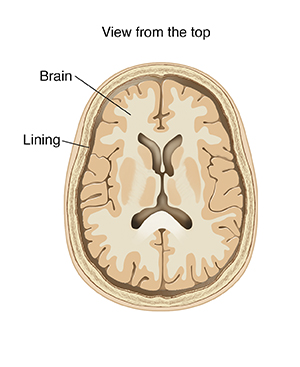Meningitis is an infection or inflammation of the membrane and fluid around the brain and spinal cord. Viral meningitis is caused by a virus. It may start as another illness, such as the stomach flu. It most often happens in children younger than
Symptoms of meningitis
Viral meningitis isn't an emergency. But the symptoms are often the same as bacterial meningitis, which is a more serious condition. You won’t know which one your child has, so it's important to get medical care right away if your child has any of these symptoms:
-
Fever over
100.4 °F (38.0 °C) (in a baby less than 2 months of age) -
Severe headache that doesn’t go away
-
Stiff neck (arching back or neck in infants)
-
Upset stomach (nausea) or vomiting with headache
-
Sleepiness and trouble waking up
-
Grouchiness and dislike of being handled
-
Bruise-like rash or splotchy skin
-
Sensitivity to light
-
No appetite
Note: If a newborn or infant is grouchy, very sleepy, or eats poorly, have them checked by a healthcare provider right away. Have them checked even if there's no fever.
Diagnosing meningitis
Tests are done to diagnose meningitis. The tests can show if it's bacterial or viral. The tests include:
-
Spinal tap. A sample of spinal fluid is taken from the spinal canal located in the lower back. It's checked for signs of bacteria or viruses. This is the main test for meningitis.
-
Imaging tests. These may include an MRI or a CT scan. These tests look for areas of swelling and inflammation.
Treating viral meningitis
Viral meningitis often goes away on its own in about


